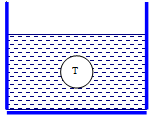Reference no: EM135304
Task 1
Determine power series values for common scientific and engineering functions
1. Obtain the Maclaurin series for the following functions. State the values of the x which the series converge.
a. cos x/3
b. ln?(1+x2)
Task 2
Solve ordinary differential equations using power series methods.
2. Solve the following ordinary differential equation using Maclaurin series.
dy/dx = ln(1 + x2)
Task 3
Solve ordinary differential equations using numerical methods.
3. Use the Euler and the improved Euler methods and comment on the two results. Use the step size shown to advance four steps from the given initial condition with the given differential equation:
dV/dt=Vt v(0)=1,h=0.1
Use the Runge-Kutta method with the step size shown to advance four steps from the given initial condition with the given differential equation:
dV/dt=t+2V V(0)=1,h=0.1
Write a conclusion on the accuracy and the validity of the above methods used (for Distinction Only)
Task 4
Model engineering situation, formulate differential equations and determine solutions to these equations using power series and numerical methods.
During the manufacture of steel component it is often necessary to quench them in a large bath of liquid in order to cool them down. This reduces the temperature of the components to the temperature of the liquid. If T is the temperature of the component in excess of the liquid temperature, the rate of change of the component temperature proportion to the temperature of the component. Take the proportional constant as K. K depends upon the volume and surface area of the component, its specific heat capacity, and the heat transfer coefficient between the component and the liquid.
Formulate a differential equation for the above engineering situation
Determine a solution for the formulated formula using numerical method and power series, the initial condition that at t=0 the temperature excess is 2500C.

Task 5
Determine Fourier coefficients and represent periodic functions as infinite series.
Find the Fourier coefficients of the following equation and write the function as infinite series.

Sketch a graph of the function within and outside of the given range, assuming the period is2π.
Task 6
Apply Fourier series approach to the exponential form and model of phasor behaviour.
Determine the complex Fourier series for the function defined by:

The function is a periodic outside the range of period 7
Task 7
Apply Fourier series to the analysis of engineering problem
Use numerical integration methods to determine Fourier coefficients from tabulated data and solve engineering problems using numerical harmonic analysis
In engineering wave analysis, the values of voltage over a complete cycle of a waveform are shown in the table below:
|
Angle (q)
(Degree)
|
Voltage V
(Volts)
|
|
0
|
0
|
|
30
|
-1.4
|
|
60
|
6.0
|
|
90
|
12.5
|
|
120
|
16.0
|
|
150
|
16.5
|
|
180
|
15.0
|
|
210
|
12.5
|
|
240
|
6.50
|
|
270
|
-4.00
|
|
300
|
-7.00
|
|
330
|
-7.50
|
Use a tabular method to determine the Fourier series for the waveform.